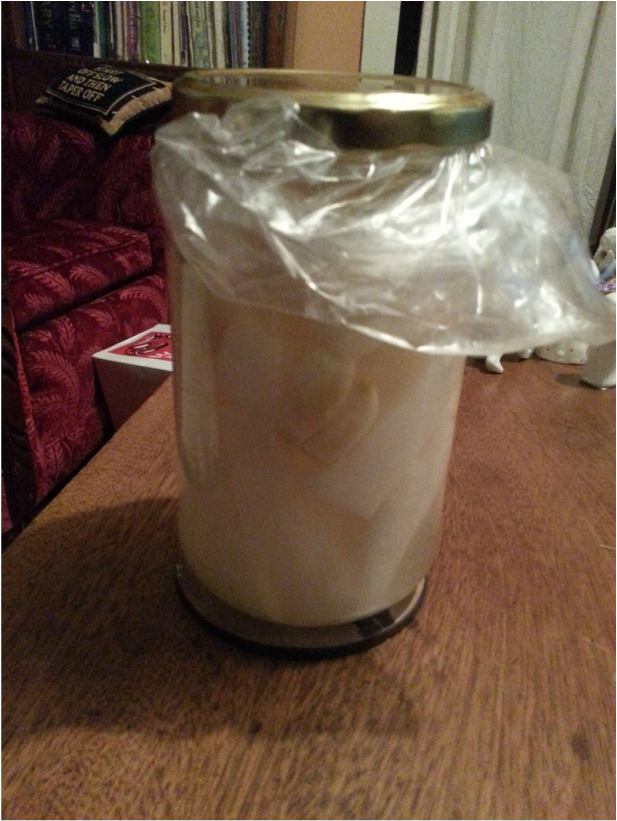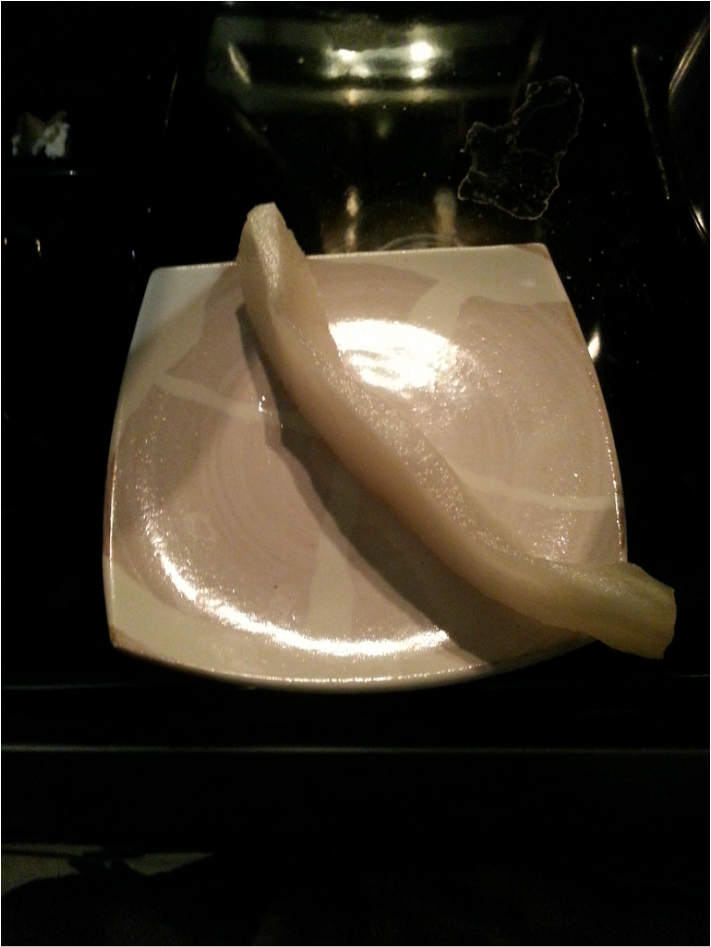
I have been interested in the preservation of food in a more natural way than the last 100 years. Well, even going back just 40 years, my own mother pickled cucumbers with only salt and water, the way they had been done for a very long time. The only difference is that she used jars, while ages ago, the cucumbers were placed in crocks or barrels. Either way, the method of pickling that she used was lacto fermentation, though I am sure she had never heard those words before.
Lacto fermentation is a method of preserving food through natural fermentation, which causes the "pickling". There is science behind it, but what I needed to know, is whether the method could be used for foods other than cucumbers. Why, yes, is the answer. Almost any vegetable can be lacto fermented, it turns out. I came across a recipe for Pickled Daikon and it was the lacto fermentation method, so I made it. It is delicious and not at all spicy, though Daikon, itself, can be. Now that I have mastered cucumbers, sauerkraut and now Daikon radish, there is no stopping me. No vegetable will be safe. Of course I will try to find real information first, and did buy two books on fermentation, which extends to using cultures and making fermented beverages, cheeses, milks and so on, as well as vegetables.
So, here it is.
Pickled Daikon
Peel a large Daikon radish and cut it into wedges small enough to fit into a jar and be completely submerged under the liquid. This is important. It is better to make the pieces shorter than to try to stuff them under. I am sure they could be cut in rings as well, but to ensure the liquid penetrates easily, the rings should be separated well in the packing.
Mix 1 teaspoon of sea salt or pickling salt with enough water to cover the radish pieces. What I did was pour water over them in the jar and then pour the water out to mix it with the salt, and return the salted water to the jar. I used farm well water that runs through a filter to remove some minerals and iron.
Then the jar needs to be covered to keep bacteria and mold out, but not tightly so the gases created from the process of fermentation can escape. When making the pickles, you could choose to cover and seal the jar tightly, in which case you could get fizzy pickles and that is good too.
I also added seven cloves of garlic to the jar. You could add some spices or chiles, dried, if you like or dill.
Then the jar was left on the counter for a week, the pickles tasted and left two days longer and then tasted again. What a difference the extra two days made in the garlic flavour. The Daikon was good.
I placed a plastic bag upside down over the jar to allow the gas to escape while keeping the molds and bacteria from entering. There are other fancier methods. If you seal the jar, make sure you have sterilized the jar and lid first and that the seal is complete, before storing for a week or two or longer. Place those jars in a cool dark place, but observe them for any spontaneous jars that might explode, though that has never happened to me.
This could not be simpler and results in a crunchy, tasty, garlic Daikon pickle. Delicious!
Lacto fermentation is a method of preserving food through natural fermentation, which causes the "pickling". There is science behind it, but what I needed to know, is whether the method could be used for foods other than cucumbers. Why, yes, is the answer. Almost any vegetable can be lacto fermented, it turns out. I came across a recipe for Pickled Daikon and it was the lacto fermentation method, so I made it. It is delicious and not at all spicy, though Daikon, itself, can be. Now that I have mastered cucumbers, sauerkraut and now Daikon radish, there is no stopping me. No vegetable will be safe. Of course I will try to find real information first, and did buy two books on fermentation, which extends to using cultures and making fermented beverages, cheeses, milks and so on, as well as vegetables.
So, here it is.
Pickled Daikon
Peel a large Daikon radish and cut it into wedges small enough to fit into a jar and be completely submerged under the liquid. This is important. It is better to make the pieces shorter than to try to stuff them under. I am sure they could be cut in rings as well, but to ensure the liquid penetrates easily, the rings should be separated well in the packing.
Mix 1 teaspoon of sea salt or pickling salt with enough water to cover the radish pieces. What I did was pour water over them in the jar and then pour the water out to mix it with the salt, and return the salted water to the jar. I used farm well water that runs through a filter to remove some minerals and iron.
Then the jar needs to be covered to keep bacteria and mold out, but not tightly so the gases created from the process of fermentation can escape. When making the pickles, you could choose to cover and seal the jar tightly, in which case you could get fizzy pickles and that is good too.
I also added seven cloves of garlic to the jar. You could add some spices or chiles, dried, if you like or dill.
Then the jar was left on the counter for a week, the pickles tasted and left two days longer and then tasted again. What a difference the extra two days made in the garlic flavour. The Daikon was good.
I placed a plastic bag upside down over the jar to allow the gas to escape while keeping the molds and bacteria from entering. There are other fancier methods. If you seal the jar, make sure you have sterilized the jar and lid first and that the seal is complete, before storing for a week or two or longer. Place those jars in a cool dark place, but observe them for any spontaneous jars that might explode, though that has never happened to me.
This could not be simpler and results in a crunchy, tasty, garlic Daikon pickle. Delicious!


 RSS Feed
RSS Feed